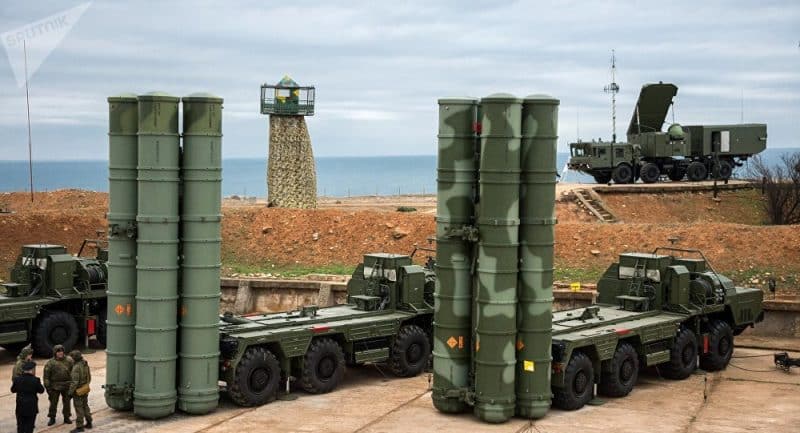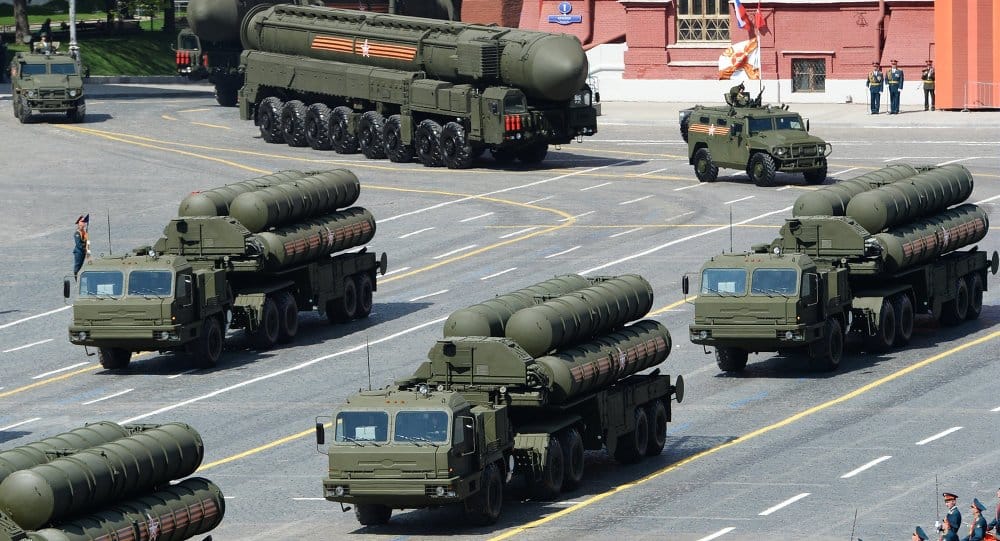India Eyes More S-400 Squadrons After Pakistan Clash, Accelerates Indigenous Kusha Missile Shield
The move is seen as both a strategic reinforcement of India’s layered air defence doctrine and a potential replacement for any S-400 batteries reportedly damaged during the recent Pakistan-India aerial confrontation—a claim publicly asserted by Islamabad but unverified by New Delhi.
(DEFENCE SECURITY ASIA) — In the aftermath of its most intense military standoff with Pakistan in recent years, India is reportedly preparing to acquire one or two additional squadrons of the Russian-built S-400 Triumf air defence system, adding to the five squadrons previously ordered under a landmark US$5.4 billion deal.
The move is seen as both a strategic reinforcement of India’s layered air defence doctrine and a potential replacement for any S-400 batteries reportedly damaged during the recent Pakistan-India aerial confrontation—a claim publicly asserted by Islamabad but unverified by New Delhi.
This possible acquisition underscores India’s urgent need to bolster its integrated air defence network across two active threat vectors: the western front with Pakistan and the increasingly militarised Line of Actual Control (LAC) with China.
Currently, three S-400 squadrons have been delivered and are operational within India, while the remaining two are expected to arrive by 2026, according to official Russian sources familiar with the delivery timeline.
India’s initial S-400 squadron was deployed to the strategically critical Pathankot Air Base near Pakistan in December 2021, with the second positioned in Sikkim to monitor the Chinese frontier in July 2022, and a third activated in Rajasthan-Gujarat in February 2023 to strengthen coverage over the northwest.
Signed in October 2018 during the BRICS Summit in New Delhi, the S-400 deal marked a strategic shift in Indian-Russian military cooperation, cementing deeper defence ties between Prime Minister Narendra Modi and President Vladimir Putin at a time of growing multipolar competition.
Known in Indian military circles as “Sudarshan Chakra,” the S-400 Triumf remains one of the most formidable long-range air defence systems in the world, capable of intercepting enemy aircraft, cruise missiles, ballistic missiles, and UAVs at ranges of up to 400 kilometres.

The S-400’s deployment has given India the ability to detect and neutralize high-value airborne threats across vast swaths of contested airspace, often compared with the American THAAD and Patriot systems in terms of performance and strategic reach.
Despite repeated warnings from Washington over potential sanctions under CAATSA (Countering America’s Adversaries Through Sanctions Act), New Delhi remained resolute, citing national security imperatives and the importance of maintaining strategic autonomy in defence procurement.
India’s S-400 posture is designed to act as a long-range shield against both regional adversaries and potential saturation attacks by drones and low-RCS munitions—a threat growing rapidly in the evolving theatre of Indo-Pacific warfare.
In parallel with its S-400 expansion plans, India is aggressively fast-tracking Project Kusha, a next-generation indigenous long-range surface-to-air missile (LRSAM) system intended to complement and eventually rival imported systems like the S-400 and Russia’s upcoming S-500.
Led by the Defence Research and Development Organisation (DRDO), Project Kusha is engineered to address critical capability gaps in India’s air defence ecosystem, particularly between MR-SAM (80 km) and S-400-class (400 km) interceptors.
The system is being developed with three interceptor variants: M1 (150 km), M2 (250 km), and M3 (350–400 km)—all featuring thrust vector-controlled ‘kill vehicles’ and dual-mode RF/IR guidance for precision targeting of both conventional and hypersonic threats.
Designed with a single-shot probability of kill exceeding 90%—and over 98.5% in salvo mode—Kusha’s interceptors are poised to deliver lethal engagement envelopes against aircraft, cruise missiles, ballistic threats, and high-speed glide vehicles.

“Project Kusha represents a critical leap toward air defence sovereignty and technological maturity,” according to defence officials overseeing the program, as India positions itself as a self-reliant military-industrial power under the ‘Atmanirbhar Bharat’ initiative.
In May 2022, the Indian Cabinet Committee on Security (CCS) approved the development of Project Kusha, and by September 2023, formal procurement of five squadrons was sanctioned with an estimated cost of ₹21,700 crore (USD 2.6 billion).
The production line is currently being established by Bharat Electronics Limited (BEL), with a prototype facility expected to be completed between 2026 and 2027, ahead of system and flight trials projected to span 12–36 months.
Flight testing of the M1 interceptor is scheduled to begin as early as 2025, while operational deployment is targeted for 2028, with full-spectrum rollout of all variants expected by 2030—positioning Kusha as a defining feature of India’s strategic defence architecture.
The system will be fully integrated into the Integrated Air Command and Control System (IACCS), enabling seamless coordination with existing platforms such as Akash-NG, Barak-8, and India’s Ballistic Missile Defence (BMD) network.
Project Kusha is also being developed with potential export value in mind, aligning with India’s ambition to become a global defence supplier—particularly for nations seeking S-400 alternatives amid geopolitical sanctions or budgetary constraints.


